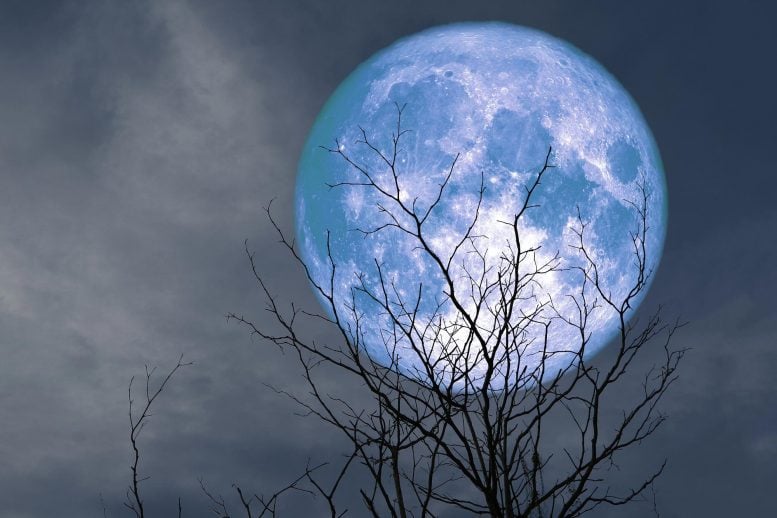
This month we’ll get to see a Full Moon on August 22, 2021, known by some early Native American tribes of the northeastern United States, as the Sturgeon Moon. The name was given to the Moon because the large sturgeon fish of the Great Lakes, and other major lakes, were more easily caught at this time of year. But that’s not all! We also get to see a Blue Moon!
We’ve all heard the phrase “once in a Blue Moon,” which usually refers to something that rarely happens. Blue Moons do sometimes happen in Earth’s night sky, giving rise to this phrase. But what is a Blue Moon?
Well, we have two kinds of Blue Moons – monthly and seasonal.
A monthly Blue Moon is the second Full Moon in a calendar month with two Full Moons. Then, there’s a seasonal Blue Moon – the third Full Moon of an astronomical season that has four Full Moons.
In astronomy, a season is the period of time between a solstice and equinox, or vice versa. Each season – winter, spring, summer or fall – lasts three months and usually has three Full Moons, occurring about 30 days apart. Because June’s Full Moon came just a few days after the June (Summer) solstice, we will see four Full Moons in the current summer season, which ends at the September equinox on September 22.
The third Full Moon – our seasonal Blue Moon – will happen on August 22. All Full Moons are opposite the Sun, as viewed from Earth, rising fully illuminated at local time around sunset and setting around sunrise.
Perhaps you’re wondering if the Moon ever actually takes on a blue color. Well, Blue Moons that are blue in color are extremely rare and have nothing to do with the calendar or the Moon’s phases; they don’t have to be Full Moons either. When a blue-colored Moon happens, the blue color is the result of water droplets in the air, certain types of clouds, or particles thrown into the atmosphere by natural catastrophes, such as volcanic ash and smoke. Also, blue-colored Moons in photos are made using special blue filters for cameras or in post-processing software.
In 1883, an Indonesian volcano called Krakatoa produced an eruption so large that scientists compared it to a 100-megaton nuclear bomb. Ash from the Krakatoa explosion rose as high into the atmosphere as 80 kilometers (50 miles). Many of these ash particles can be about 1 micron in size, which could scatter red light and act as a blue filter, resulting in the Moon appearing blue.
Blue-colored Moons appeared for years following the 1883 eruption. Many other volcanoes throughout history, and even wildfires, have been known to affect the color of the Moon. As a rule of thumb, to create a bluish Moon, dust or ash particles must be larger than about 0.6 micron, which scatters the red light and allows the blue light to pass through freely. Having said all of that, what we call a Blue Moon typically appears pale grey, white or a yellowish color – just like the Moon on any other night.
Generally, Blue Moons occur every 2 to 3 years. Our last Blue Moon was on Oct. 31, 2020 – the night of Halloween. Mars was red and very large, since it was closer to Earth, and it was seen in the sky near the Blue Moon. Coincidently, this year’s Blue Moon will appear near planets again, but this time Jupiter and Saturn! We won’t see another Blue Moon until August 2023.
Article From & Read More ( Don’t Miss: Rare Seasonal “Blue Moon” Rises Tonight - SciTechDaily )https://ift.tt/2Wac3Ca
Science
No comments:
Post a Comment